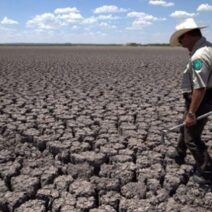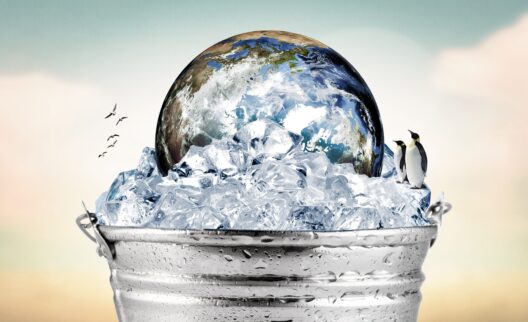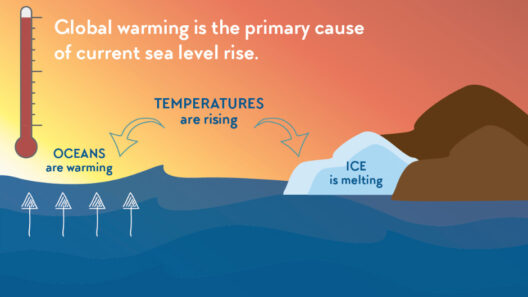Climate change stands as one of the most pressing issues facing humanity today, transforming our landscapes and, consequently, our communities. The increasing severity of disaster zones is a direct manifestation of global warming, which affects everything from the frequency of natural disasters to the socio-economic fabric of the affected populations. This article elucidates the multifaceted impacts of global warming, exploring its ramifications on communities, ecosystems, and human behavior.
The phenomenon of climate change is insidious. Gradually, it reshapes weather patterns, resulting in catastrophic events such as hurricanes, floods, wildfires, and droughts. Meteorological data indicates an alarming increase in these extreme weather events, which are directly correlated with rising atmospheric temperatures. For instance, higher sea surface temperatures can lead to more intense hurricanes, as warmth fuels these storms, transforming them into formidable adversaries to coastal communities.
Disaster zones are not merely places marked by devastation; they are environments where ecosystems come to a staggering halt. Biodiversity is compromised, and flora and fauna struggle to adapt to rapidly changing climates. The stress inflicted on these ecosystems reverberates through food webs, endangering species and, therefore, the communities that depend on them for sustenance. Particularly susceptible are rural communities whose livelihoods hinge on agriculture and natural resources. Crop failures due to unpredictable weather patterns can precipitate food insecurity, engendering a cycle of despair and economic stagnation.
The socio-economic implications of global warming extend far beyond the immediate aftermath of a disaster. Communities enduring recurrent catastrophic events find themselves embroiled in a perpetual struggle for resources. Displacement becomes common, as families are forced to flee their homes for safety, often into already overburdened urban centers. This influx exacerbates housing shortages, strains public services, and precipitates social unrest. The challenges of assimilating displaced populations can fray the fabric of social cohesion, leading to tensions that underline the fragility of community bonds.
Moreover, the psychological toll of living in a disaster-prone zone cannot be overlooked. The constant threat of disaster breeds anxiety and uncertainty, creating collective trauma that permeates community life. Mental health support systems, often underfunded and overwhelmed even in stable conditions, struggle to accommodate the heightened demand in disaster-stricken areas. The impacts can linger for generations, passed down through familial lines, solidifying a legacy of vulnerability.
Interestingly, the fascination with disaster zones is not solely rooted in the catastrophes themselves, but also in the narratives of resilience and adaptation that emerge in their wake. Communities often rally together, showcasing an innate human capacity for hope and solidarity. Grassroots movements may arise, fueled by a shared sense of urgency to combat the onset of climate change and restore their environment. Such communal efforts can transform despair into empowerment, fostering innovative approaches to sustainability and recovery. Individuals become advocates for climate justice, demanding systemic changes that prioritize the health of both people and the planet.
In tandem with community-led initiatives, there is a pressing need for governmental and organizational involvement. Resilience planning, which entails the strategic development of disaster response systems, serves as a beacon of hope. Policies focusing on mitigation strategies, such as improved infrastructure design and investment in renewable energy, can significantly reduce the severity of disaster impacts. Fostering a culture of preparedness becomes paramount, enabling communities to anticipate and respond effectively to disasters when they arise.
Education emerges as a critical component in navigating the complexities of climate change and disaster preparedness. Awareness campaigns that inform communities about the impacts of global warming can empower individuals to make informed decisions, both in their personal lives and within their communities. Such initiatives can galvanize public engagement, fostering a collective responsibility toward environmental stewardship.
The heart of addressing the challenges posed by global warming lies in understanding its global nature while recognizing localized effects. Each community faces unique vulnerabilities shaped by their geographic, economic, and cultural contexts. Thus, a nuanced approach is essential for developing effective strategies that promote adaptive capacity and sustainability. Collaboration between local, national, and international bodies can foster a more cohesive response to climate change’s far-reaching effects.
Ultimately, the intricate relationship between global warming and disaster zones deepens our understanding of the urgency surrounding climate action. As communities grapple with the relentless realities of climate change, they are continually reminded of their interconnectedness within a global ecosystem. This shared experience compels us to reflect on our responsibilities: to ourselves, to one another, and to the planet we inhabit.
In conclusion, disaster zones vividly illustrate the adverse effects of global warming on communities. The interplay of environmental degradation and societal upheaval underscores the urgency for collective action. Understanding these impacts not only informs our present strategies but also shapes our vision for a sustainable future. As we confront the reality of climate change, we must commit to building resilient societies capable of withstanding and thriving in the face of adversity.







